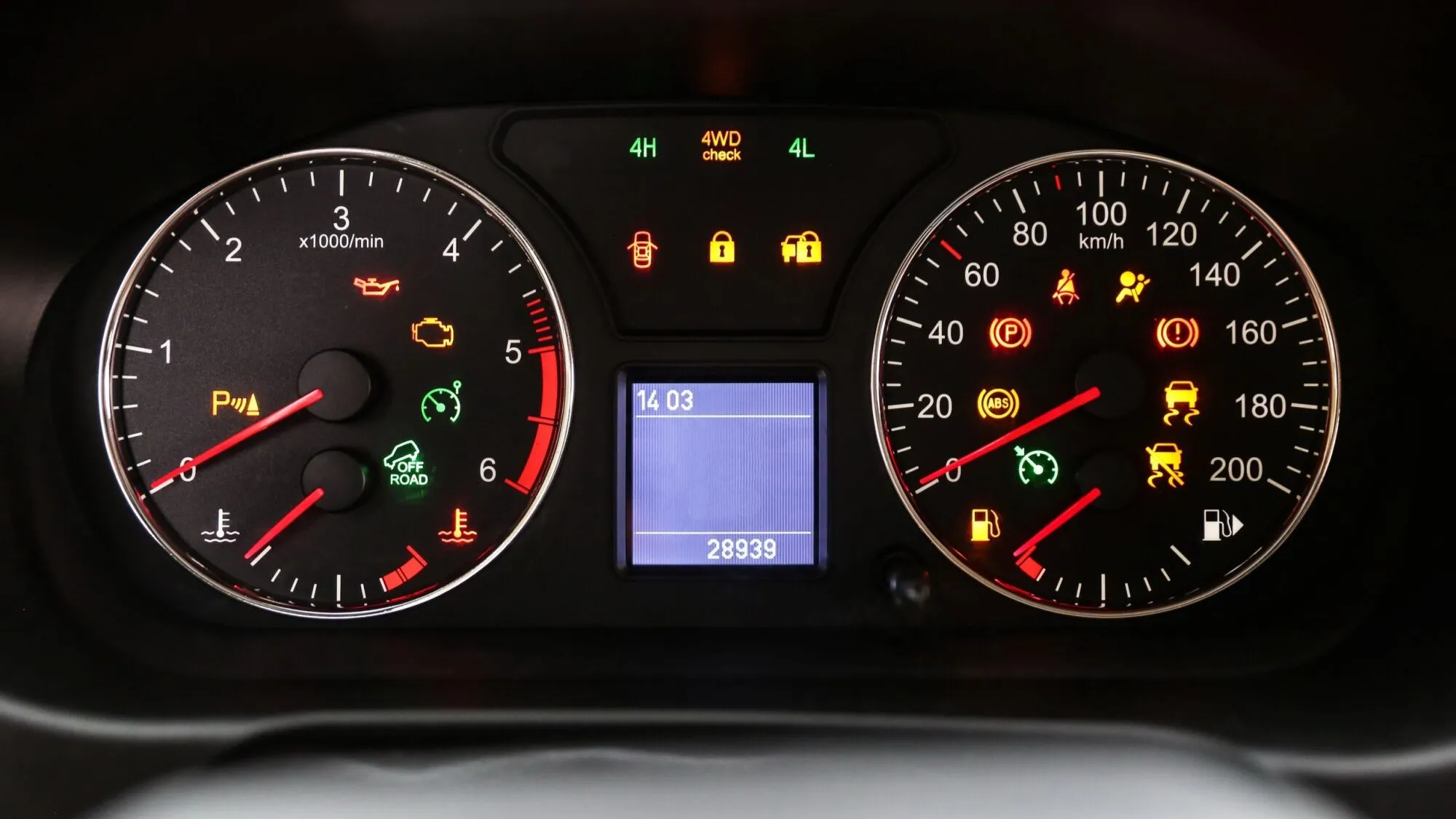In modern cars, dashboards are loaded with dials and a range of warning lights that can quickly activate, often leaving drivers puzzled.
Most of these lights are not a cause for immediate concern, as they usually switch off once the engine is running. However, if a warning light illuminates while driving, it’s essential to understand what it signifies, as some lights may point to serious issues that need urgent attention.
These lights are color-coded in red, orange/amber, and green, similar to a traffic light system. A red light signals “stop” and indicates a problem that requires immediate investigation. Orange or amber acts as a caution, suggesting that some action will soon be necessary. Meanwhile, green lights serve as reassuring reminders, letting drivers know that systems are functioning normally.
Here’s a helpful guide to the most common dashboard warning lights.
Red dashboard warning lights

Airbag warning light
This red icon, resembling a person holding a ball, indicates a potential malfunction with one of the airbags. This issue is critical, as it may result in the airbag failing to deploy in an accident or, conversely, deploying unexpectedly while driving.
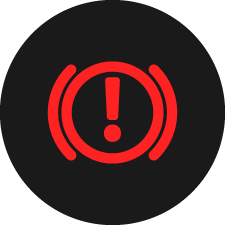
Brake system light
If this light comes on, first check that the handbrake is fully released. If the light stays on, it could signal worn brake pads or discs, low brake fluid, or an issue with the ABS or ESP systems. Prompt inspection by a mechanic is advised.
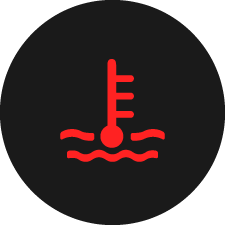
Engine cooling system
This warning suggests low coolant levels or a blockage, which could lead to engine overheating. Seek immediate assistance from a breakdown service or head to the nearest garage.

Engine oil pressure
This light typically means the engine’s oil pressure is low, possibly indicating dangerously low oil levels. Pull over to a safe location, consult the vehicle’s manual, and check the oil level. If needed, top up with the specified oil type.

Power steering system
A warning about the power steering system can indicate that power assistance may fail, making steering difficult. Have the system inspected as soon as possible.

Vehicle charging system
A red battery icon often means the battery isn’t charging properly or is being drained when the car is off. Since this is a frequent reason for breakdowns, arrange an inspection if this light comes on.

Steering lock
If the steering lock light stays red after starting, it signals a malfunction in the locking mechanism. Avoid turning off the engine and head to a garage for inspection.

Ignition switch
This warning light could point to issues with the car’s ignition system. Have it checked by a mechanic to ensure smooth operation.
Orange/amber dashboard warning lights

Adaptive suspension dampers
This warning appears when the adaptive suspension needs servicing.

Air suspension
Indicates either that the air suspension is set to a raised position or a malfunction in the system.

Airbag warning light
An amber airbag light usually means the front passenger airbag has been turned off, such as when a child seat is placed in the front.
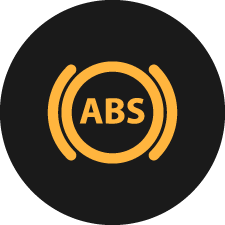
ABS
ABS allows safer braking while steering. This light means there’s a problem with the system, and a mechanic should inspect it.

AWD or 4WD
In cars with selectable all-wheel drive, this light confirms the chosen drive mode.

Brake pad monitoring
This light signals that the brake pads or discs need replacement soon.

Broken bulb
If a bulb is out, this symbol will appear, prompting you to replace it.
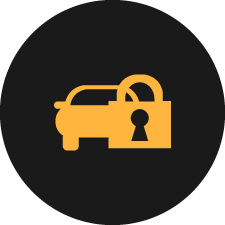
Child safety lock
This light confirms that the child safety lock is activated on the rear doors.

Convertible roof
Indicates an obstruction or issue with the roof mechanism.
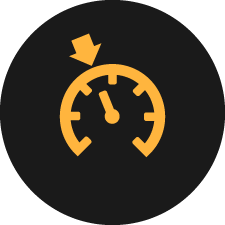
Cruise control
Shows that cruise control is on.

DPF
For diesel cars, this light often means the DPF requires cleaning, which may involve a high-speed run. Persistent issues could affect emissions testing.

Electronic throttle control
This symbol suggests a problem with the accelerator, which should be inspected without delay.
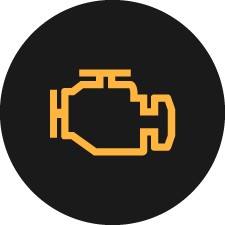
Engine management light
Indicates a fault with the car’s engine management. The car may enter a reduced-power ‘limp home’ mode. Immediate inspection is recommended.
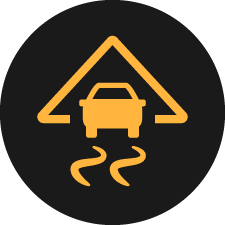
ESP
The ESP light signals a potential fault if it appears when the system hasn’t been manually disabled.

Glow plug light
For diesel engines, this light shows if there’s an issue with a glow plug, essential for cold starts.

Key not detected
Warns that the ‘smart key’ isn’t detected, reminding you not to drive off without it.
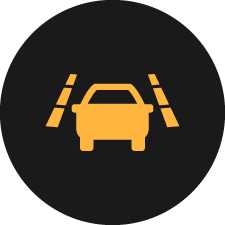
Lane Keep Assist
Shows that the system is active. A red light here means a fault in the system.

Low fuel level
Signals that the fuel tank is nearly empty.

Rain and light sensor
Indicates an issue with automatic lights or wipers.

Rear foglights
Reminds you to turn off the rear fog lights after driving in fog.

Rear windscreen heater
This light means the rear windscreen heater is on. Switch it off when no longer needed.
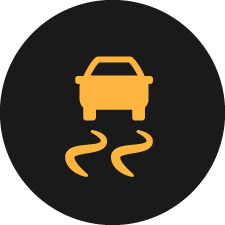
Traction control
This light may flash briefly to show the system is active, or stay on if turned off manually. If it appears spontaneously, have it checked.
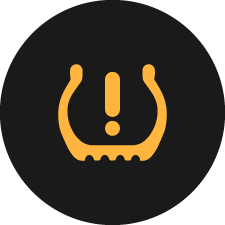
Tyre pressure monitor
Shows if one of the tyres has low pressure. Consult the manual for steps to reset the monitor if needed.

Warning light
A yellow triangle with an exclamation mark is a general warning. There should be a message explaining the specific issue.

